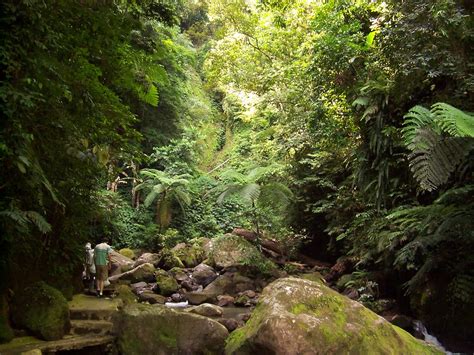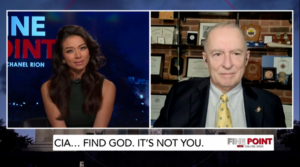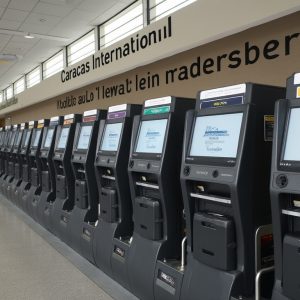PHILIPPINE ADVENTURES
“Most of today’s young voters [in the Philippines] have no living memory of the horrors of the martial law era or the massive nationwide plunder of the country’s resources. What they are told by their parents or grandparents, or what they see on the candidate’s whitewashed social media accounts, is that the Philippines under Marcos was a golden age.”
Keith B. Richburg[1]
A former co-worker once told me that observing Philippine politics is like watching a television soap opera. No matter how long it has been since you last watched the show, you can return (even years later) and catch up immediately—the same characters, the same problems, the same families, the same scripts, show up over-and-over again—a true Asian version of the “Groundhog Day” movie. So, in today’s news I learned that Ferdinand “Bongbong” Marcos Jr., the 64-year-old son of the former Philippine dictator ousted by a popular uprising 36 years ago, stands at the threshold of a landslide presidential victory. “Bongbong”—social status in the Philippines demands a good nickname—did not participate in presidential debates and didn’t announce any major policy initiatives during the campaign.[2] He didn’t need to. On his party ticket as Vice Presidential candidate is Sara Duterte, the daughter of outgoing, and controversial, strongman Rodrigo Duterte. She ran on the ticket without her father’s approval.
Ah yes, the topsy-turvy world of Philippine politics.
A seasoned case officer in the Philippines described the electorate this way: give them a familiar name, a t-shirt, a Jollibee yumburger and a couple pesos and they’ll vote for you every time.
Despite the political craziness, I love the country and its people.
Over the years, I probably have been to the Philippines 15-20 times, beginning with jungle survival training in the country over 50 years ago, during my Air Force years, and more recently several visits during my intelligence career. Each trip has been its own adventure.
I will never forget my first visit to the Philippines. We landed at Clark Air Force Base, at that time probably the most beautiful U.S. military facility in the world. Now it is largely deserted, a mere shell of what it was, overgrown by jungle foliage, its once-great runways reduced to hosting planes carrying Japanese and Taiwanese tourists playing golf near the former Officer’s Club.
Back then, as I departed the plane to walk down the steps to the tarmac, I felt the tropical blast of nighttime heat and humidity on my face, and my nostrils were bombarded—for the first time—with the distinctive smells of Asia. I was in my early 20s at the time (with the maturity, I might add, of a young teenager).
I was so locked into my own world, in truth so totally self-absorbed, that I didn’t realize what was happening in the country outside the base itself. Those were the early days of martial law declared by President Ferdinand Marcos (1917-1989). Martial law in the country would last from 1972 to 1981, ostensibly to protect the country from civil strife and prevent a possible communist takeover after a series of bombings in the metro Manila area. I had no way of knowing, at the time, that Marcos was clawing his way up the ladder: from lawyer, to politician, to dictator, to kleptocrat. Facilitating his rise to power was a massive influx of money from the U.S.—to maintain a string of military bases throughout the country (not to mention the income and corruption generated from bars and brothels located outside the base gates)—because the Philippines was a valuable Asian strategic U.S. ally during the Cold War in general, and later, during the proxy war in Vietnam.
In a weird wrinkle in the time-space continuum—if not God’s ultimate timing—I arrived in the Philippines at the same time the country began its slide toward insignificance.
At the time, the Philippines also served as an important training base for U.S. troops going to Vietnam. In my case, as an airborne Chinese linguist soon to participate in combat sorties in the Tonkin Gulf, we were trained to survive in a jungle environment should our plane be shot down.
What an experience for a young man!
Most of our training took place in the jungle terrain on the slopes of Mount Pinatubo, in the Crow Valley, some 14 miles from Clark AFB. We were divided into small units and assigned a Negrito[3] to show us how to survive in a jungle environment. Our guide’s skin was dark brown, with curly hair and several missing teeth, a pot-belly held up by a loincloth, bare-footed and carrying the largest bolo knife (or was it a machete) I have ever seen, before or since. To get our attention, he sent us away and told us to come back and look for him in fifteen minutes. He hid in an area covered by jungle foliage, about the size of a tennis court. Try as we may, we couldn’t find him. After an hour, he showed himself, springing up out of the ground like an ebony dwarf phoenix: he had buried himself, using a reed to breathe, and we had trampled on him the entire time!
Later that day, our American squad leader assigned us two trees to which we tied our hammocks (using parachute rigging). Then we followed our Negrito guide into the tropical jungle foliage: when a tropical downpour began, he showed us how to make a raincoat out of banana leaves, demonstrated what vines held water (what a sweet taste), showed us how to use tropical tree bark as soap, and what plants could be used to protect against insect bites. When we returned, my hammock was so full of water that it bowed the two trees together. I dumped the water out and hoped the material would dry by bedtime. Later that night—after a homemade banana milkshake and amidst florescent jungle toadstools and the sounds of faraway collapsing banana trees and shrieking monkeys—I tried to get snatches of sleep in my water-logged hammock. Late in the morning, I made the mistake of turning over in my sleep: the hammock shot me out like a pilot’s ejector canopy, sending me hurtling over the edge of the ravine, with me desperately grasping and clutching at vines and dirt on my way down. My friend Kirbo, located in a hammock nearby, said he heard me use every curse word imaginable in the English language (and a few creative add-ons) as I tumbled headlong down the ravine.
Sigh.
In later years, in the classroom, I would relate dozens of these stories from the jungle experience to my students—complete with imitating Negrito whoop-whoop sound effects as we tried to hide from them on the final day—and other Philippine escapades.
I have enough tales for a lifetime.
Over the years, I have found the Philippines—and its people—to be an almost incomprehensible mixture of contradictions, beautiful women, and cultural veneers stacked like a multi-layered cake. It makes for an intoxicating brew that overwhelms first-time visitors and attracts a fascinating blend of U.S. expats (a few years ago, I spent a couple days with an expat motorcycle group, who rode their Harley Davidson bikes on Clark’s abandoned runways and streets, owned their own pool hall—without paying taxes—and trained their mammasans to cook food better than my grandma’s).
The Philippines is also a country of startling contrasts. It is an archipelago of over 7,000 islands where tourists can enjoy white-sand beaches or cope with some of the world’s worst urban congestion; where Muslim terrorists and the world’s longest-lasting Maoist insurrection in the southern-most islands exist alongside Catholic ruling elites and oligarchic families. A country where the orderliness of Makati City—famous for its skyscrapers, upscale shopping malls, restaurants, and entertainment venues—and where much of the country’s Chinese minority resides (who constitute five percent of the population but account for over ninety percent of the country’s business activities) is set amid the chaotic hustle and bustle of Manila.[4] Where a trip to visit the war memorial site of Corregidor Island in Manila Bay has different tour routes for American visitors and Japanese tourists. A place where the most valuable export is its people: Filipinas with advanced medical or teaching degrees, for example, make more money by being maids abroad and sending remittances back home.[5] (One of the true spectacles to observe in almost every Asian city is large weekend gatherings of Filipina maids in the public parks; I witnessed this first-hand during my time in Singapore and Hong Kong.)
Speaking of Manila, one of life’s truly unforgettable experiences is trying to cope with the city’s bumper-to-bumper traffic congestion: every red-light intersection becomes a flanking movement worthy of von Schlieffen (with as many as eight cars abreast, all racing to be the first on the road ahead). One evening—after returning by plane from Davao City in Mindanao—a pop-up rain squall forced our embassy car driver to spend hours in snarled traffic, even though we could see our hotel from the window. One of my favorite books,[6] set in Manila in the days before vehicle air conditioning became common, features one unforgettable character, riding a motor bike through the traffic sprawl, tossing ripe durians through the open windows. (The smell of over-ripe durian is one of Asia’s most enduring memories: think of the fetid odor of a dead skunk lying in the hot summer sunshine for days. It is illegal, for example, to take durians on a plane flight. As you can imagine, I have several durian-related stories as well).
In Manila and elsewhere, as an American, I noticed the vestiges and superficial brushstrokes of a prolonged period of American colonial tutelage in areas such as education (on the walls at the U.S. Embassy in Manila hangs a wonderful photograph of the Thomasites[7]) and business.
Moreover, during my many visits to the Philippines I have met individuals worthy of inclusion in Reader’s Digest Unforgettable Characters, both native Filipinos and American military and intelligence officials. Many I still consider among my circle of closest friends. Indeed, enough to populate a lifetime of books and missives.
Ah, the memories.
[1] Keith B. Richburg, “Philippines election sends warning about authoritarian nostalgia,” The Washington Post (Opinion), May 9, 2022.
[2] See, among others, Dave Lawler, “Marcos set for landslide victory in Philippines presidential election,” Axios, May 9, 2022.
[3] “Negrito” is a collective term loosely applied to some 30 indigenous tribal groups in the Philippines.
[4] The Greater Manila Metro Area has a population of 14.4 million (out of a total Philippine population of 117 million); by 2050, the city’s population is projected to grow to 23.5 million (the world’s 12th largest city). See, “City population 2050,” Ontario Tech University, 2022.
[5] There are almost two million Philippine Overseas Contract Workers (OCWs), sending back home some 134.77 billion pesos in remittances, or nine percent of the country’s Gross Domestic Product (before the SARS-Covid-19 pandemic).
[6] William Marshall, Manila Bay, Mysterious Press, 1988.
[7] A large group of American volunteer teachers came to the Philippines in June 1901. Two months later, 600 teachers—the so-called Thomasites arrived (their name was derived from the ship they travelled on, the U.S. Army Transport Thomas). They laid the foundations for the modern indigenous school system.




